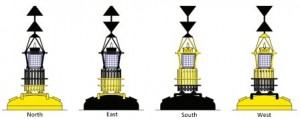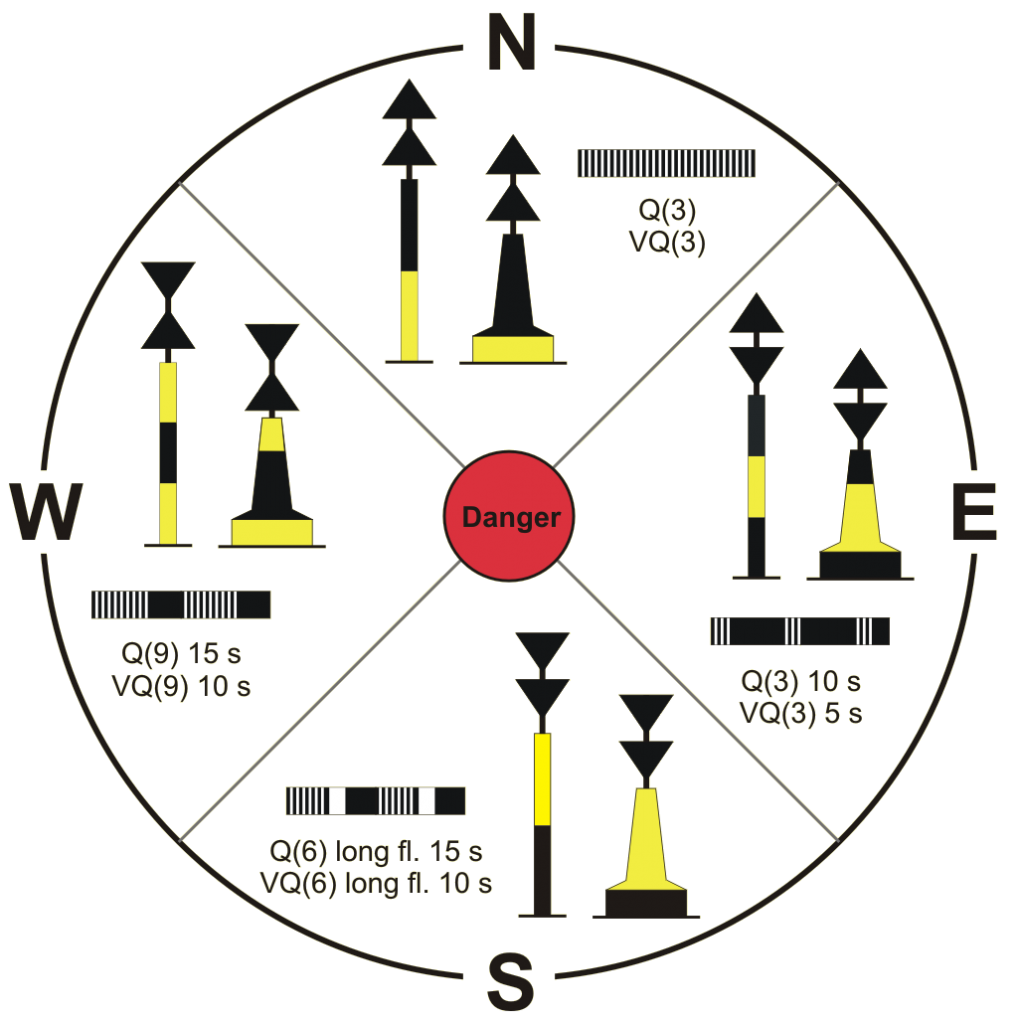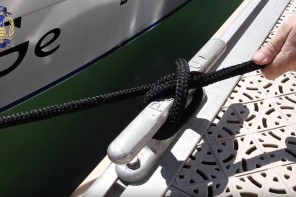Cardinal Markers
A brief reminder on cardinal markers and what they mean.
Cardinal markers (see above) are used as to indicators of relative safe passage when lateral markers are not considered appropriate. The are ideal for pointing out an area of danger, similar to how an ‘isolated danger’ marker is used, except the cardinal markers tell you which direction away from the danger is most safe. For example, if you see a SOUTH cardinal marker, the safest water in that area is SOUTH of the marker. This is one of the good reasons to keep a compass at the helm (preferable mounted), even if you have a GPS navigation system. Looking at your bearing on your compass is quick and easy and allows you to plan what you need to do if you unexpectedly approach a cardinal marker.
Unlike the easy to remember RED and GREEN system used in lateral markers, different cardinal markers are not identified by unique colours. Instead, they are identified in three different ways, accounting for day and night visibility.
NORTH CARDINAL MARKER:
Both cones point upwards. Marker is black at the top of the pillar. Lights flash in a long continuous pattern.
EAST CARDINAL MARKER:
One cone points up, the other points down. Think, the shape of an egg. E for egg. E for East. Marker is black at the top and black at the bottom. Light flashes in sets of 3 flashes.
SOUTH CARDINAL MARKER:
Both cones point down. Marker is marked black on the bottom. Lights flash in sets of 6 flashes plus 1 LONG flash. This extra flash is stop any confusion with trying to remember your count/
WEST CARDINAL MARKER:
Both cones face inwards. Think of an abstract wine glass. W for win. W for west. Marker is marked black in the middle. Lights flash in sets of 9 flashes.
Remembering your cardinal markers:
It all may seem a bit daunting, trying to remember everything. The arrows…the black marks…the flashes. Don’t fret. It really is quite simply. Think of your compass rose. Up is north. Down is south. That’s the arrows for north and south markers easily remembered. Egg shape for East. Wine glass for West. The black marks are hinted at by the direction of the arrows. Study the above diagram and you’ll see the pattern. As for the lights…if you can remember the face of a clock then you’re all set. East is 3 o’clock. Three flashes. West is 9 o’clock. Nine flashes. You can fill in the rest! Always remember though, if in doubt, stop your boat if safe to do so and then take your time to assess the situation and consult a chart. Hitting a submerged hazard because you decided to guess what a marker said is never a fun way to end a day on the water.






